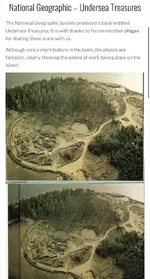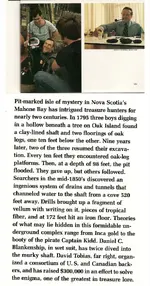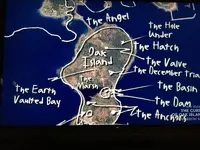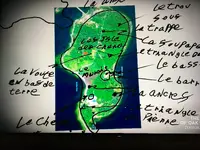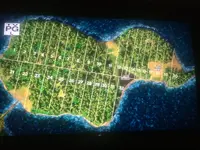...but it DOES throw even MORE suspicion that the information is false. Given Wilkins' reputation, accepting any of his writings as "evidence" would be like accepting investment advice from Bernie Madoff...
I do take the point, but Wilkins’ personal papers suggest something quite different. He intended to publish Palmer’s maps, but when Palmer refused he was actually being honest in putting what he believed to be genuine treasure instructions on the maps he created.
He was also honest in publishing in the same book the island outline to which these instructions actually belonged. As indicated, this is clearly Oak Island as it appears in Des Barres’
Atlantic Neptune the position and shape of which would have been plotted some 30 years before the Money Pit was reputedly discovered.
Wilkins didn’t want to give everything away, because he wanted a shot at Oak Island himself after Hedden identified the island for him. Hedden wrote in correspondence that Wilkins had no idea that his map was similar to Des Barres’ chart, but Wilkins checked up after Hedden’s visit and finally realised the truth. It wasn’t Captain Kidd, it wasn’t Juan Fernandez and it wasn’t the China Sea. It was Oak Island.
This is a treasure hunt, and it should be appreciated that Wilkins wasn’t being altogether forthcoming about what he knew - but I don’t think that he had the full answer as he claimed.
My point is that by taking what we know about the ground markers on the island and then assuming that the instructions on all five maps are genuine and that they apply to the underlying plan there is a strong likelihood that any major deposit on the island is highly unlikely to be in the Money Pit.
Wilkins was an eccentric from a working class background with a chip on his shoulder concerning the privileged upper classes of his age under whose prejudice he had suffered, including government. He was thus fully prepared to believe in cover-ups which he was keen to expose - hence UFOs as reported by pilots during WW2 and shortly thereafter and strenuously denied by the powers that be.
Wilkins was a product of his age and should be assessed as such. His world believed in buried treasure, treasure maps, treasure hunts and UFOs and, as such, Wilkins wrote about them in order to supplement his income.



